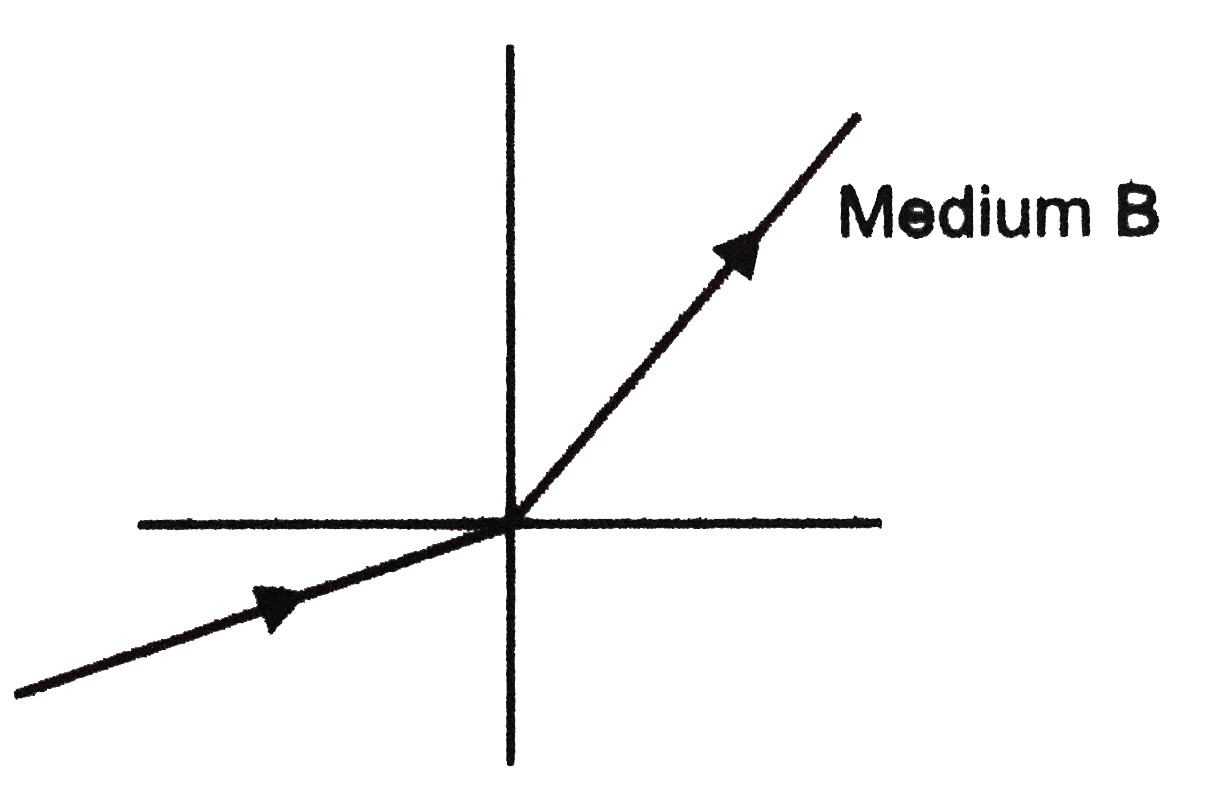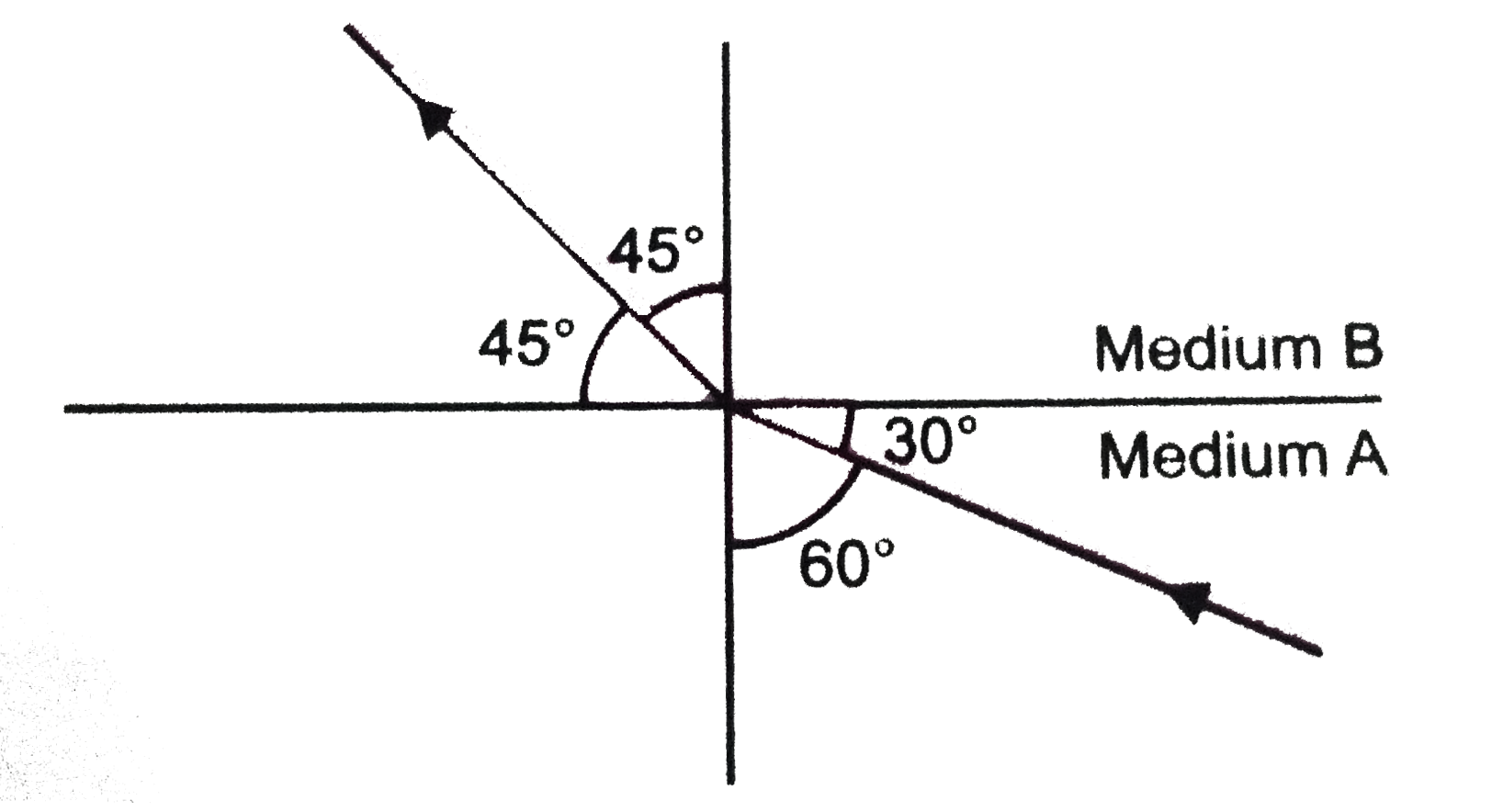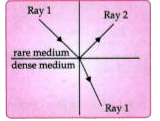A ray of light passes from medium 1 to medium 2. which of the following quantities of the refracted ray will differ from that of the incident ray speed, intensity, frequency, and wavelength ?
The correct Answer is:Speed, intensity and wavelength.
To solve the question regarding the quantities that differ between the incident ray and the refracted ray when light passes from medium 1 to medium 2, we can analyze the properties of light during refraction.
1. Understanding Refraction:
- When light travels from one medium to another (for example, from air to water), it undergoes refraction, which is the bending of light due to a change in speed.
2. Analyzing Speed:
- The speed of light changes when it enters a different medium. For example, light travels faster in air than in water. Therefore, the speed of the refracted ray will differ from that of the incident ray.
3. Analyzing Wavelength:
- The wavelength of light is also affected when it passes from one medium to another. Since the speed of light changes and the frequency remains constant, the wavelength must change to maintain the relationship given by the equation:
v=fλ
where v is the speed, f is the frequency, and λ is the wavelength. Thus, the wavelength of the refracted ray will differ from that of the incident ray.
4. Analyzing Frequency:
- The frequency of light remains constant when it passes from one medium to another. This is because frequency is determined by the source of the light and does not change during refraction. Therefore, the frequency of the refracted ray will be the same as that of the incident ray.
5. Analyzing Intensity:
- The intensity of light can change when it enters a different medium due to reflection and absorption. However, this change is not as straightforward as speed and wavelength, as it depends on the properties of the media involved. Generally, the intensity can differ due to these factors.
Conclusion:
- The quantities that differ between the incident ray and the refracted ray are:
- Speed (changes)
- Wavelength (changes)
- Intensity (may change)
- Frequency (remains the same)
Final Answer:
The refracted ray will differ in speed, wavelength, and potentially intensity, while the frequency will remain unchanged.
---
- When light travels from one medium to another (for example, from air to water), it undergoes refraction, which is the bending of light due to a change in speed.
- The speed of light changes when it enters a different medium. For example, light travels faster in air than in water. Therefore, the speed of the refracted ray will differ from that of the incident ray.
- The wavelength of light is also affected when it passes from one medium to another. Since the speed of light changes and the frequency remains constant, the wavelength must change to maintain the relationship given by the equation:
v=fλ
where v is the speed, f is the frequency, and λ is the wavelength. Thus, the wavelength of the refracted ray will differ from that of the incident ray.
- The frequency of light remains constant when it passes from one medium to another. This is because frequency is determined by the source of the light and does not change during refraction. Therefore, the frequency of the refracted ray will be the same as that of the incident ray.
- The intensity of light can change when it enters a different medium due to reflection and absorption. However, this change is not as straightforward as speed and wavelength, as it depends on the properties of the media involved. Generally, the intensity can differ due to these factors.
- The quantities that differ between the incident ray and the refracted ray are:
- Speed (changes)
- Wavelength (changes)
- Intensity (may change)
- Frequency (remains the same)
The refracted ray will differ in speed, wavelength, and potentially intensity, while the frequency will remain unchanged.
Topper's Solved these Questions
- BOOK - ICSECHAPTER - REFRACTION OF LIGHT AT PLANE SURFACESEXERCISE - EXERCISE-4(A) MULTIPLE CHOICE TYPE3videos
REFRACTION OF LIGHT AT PLANE SURFACES
- BOOK - ICSECHAPTER - REFRACTION OF LIGHT AT PLANE SURFACESEXERCISE - EXERCISE-4(A) NUMERICALS4videos
REFRACTION OF LIGHT AT PLANE SURFACES
- BOOK - ICSECHAPTER - REFRACTION OF LIGHT AT PLANE SURFACESEXERCISE - EXERCISE-4(D) MULTIPLE CHOICE TYPE3videos
REFRACTION OF LIGHT AT PLANE SURFACES
- BOOK - ICSECHAPTER - REFRACTION OF LIGHTEXERCISE - DIAGRAM BASED MCQ:5videos
REFRACTION OF LIGHT
- BOOK - ICSECHAPTER - REFRACTION THROUGH A LENS EXERCISE - EXERCISE-5(D) (MULTIPLE CHOICE TYPE)2videos
REFRACTION THROUGH A LENS
Similar Questions
A ray of light passes from vaccum into a medium of refractive index n. If the angle of incidence is twice the angle of refraction, then the angle of incidence is
View SolutionA light ray enters from medium A to medium B as shown in Figure. The refractive index of medium A relative to B will be
 View Solution
View Solution
Knowledge Check
- Question 1 - Select One
When a light ray enters from a denser medium to a rarer medium.
AThe light ray bends towards the normal.BAngle of incidence is less than angle of refraction.CSpeed of light decreases.DSpeed of light remains unchanged. - Question 2 - Select One
When a ray of light from air enters a denser medium, it :
Abends away from the normalBbends towards the normalCgoes undeviatedDis reflected back
Ray of light bends as light travels from one medium to another.
View SolutionFigure shows a ray of light as it travels from medium A to medium B. Refractive index of the medium B relative to medium A is
 View Solution
View SolutionA ray of light moves from a rare medium to a dense medium as shown in the diagram below. Write down the number of the ray which represents the partially reflected ray.
 View Solution
View SolutionA ray of light passes from a medium A having refractive index 1.6 to the medium B having refractive index 1.5. The value of critical angle of medium
A is….View SolutionWhen a ray of light passes from air to glass, for what angle of incidence, the ray will not be deviated?
View SolutionConsider a ray of light passing from one medium to another. If the angle of refraction is less than the angle of incidence, will the speed of light in the second medium be less or more than that in the first medium?
View Solution

